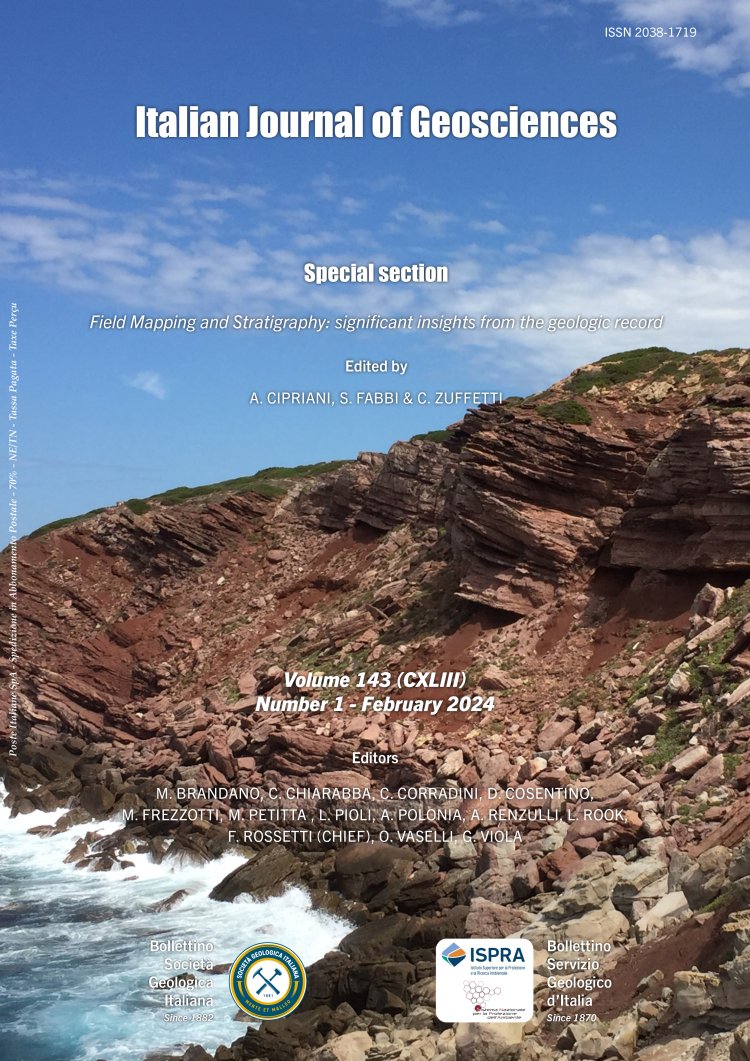

“il Casone-Monte delle Fate” olistostrome in the middle Eocene of the Eastern External Ligurian Unit (Monti della Tolfa, northern Latium, Italy): new constraints on the geodynamic evolution of the northern Apennines
Paola Cipollari1, Anas Abbassi1,2 & Domenico Cosentino1
1Dipartimento di Scienze, Università degli Studi Roma Tre.
2Research and Development in Applied Geosciences laboratory (RDGA), FST-Tangier, University Abdelmalek Essaadi-Morocco.
Corresponding author e-mail: paola.cipollari@uniroma3.it
Volume: 143 (2024) f.1
Pages: 155-172
Abstract
To the NE of Santa Severa (RM) some Meso-Cenozoic carbonate rocks with Tuscan affinity crop out in tectonic windows within the allochthonous Flysch della Tolfa (External Ligurian Unit). These carbonate rocks are mainly referable to the Calcare Massiccio, calcari selciferi, and scaglia toscana. Field work for the geological survey of the CARG Project 364-Bracciano, carried out in the area between “Monte delle Fate” and “Bagni” (Pian della Carlotta, Cerveteri, RM), provided new insights into the relationships among these Meso-Cenozoic carbonate rocks and the flysch della Tolfa. In the “il Casone” and “Monte delle Fate” areas, the stratigraphical and geometrical evidence observed in the field point to a stratally disrupted chaotic complex, consisting of exotic blocks with respect to the matrix (extrabasinal blocks with Tuscan affinity) embedded within a highly tectonized argillaceous matrix. We define it as a sedimentary mélange that we call “il Casone-Monte delle Fate” olistostrome. The calcareous nannofossil assemblages from the argillaceous matrix of this olistostrome point to a Bartonian age (middle Eocene). This chronostratigraphical result suggests the presence of a significant middle Eocene submarine mass wasting process emplacing a sedimentary mélange in the depositional setting of the External Ligurian sedimentary basin. The reactivation of pre-existing extensional faults at the ocean-continent transition between the Adria passive margin and the Ligurian Domain is the suggested triggering mechanism for explaining the middle Eocene “il Casone-Monte delle Fate” olistostrome. The comparison with a nearly coeval olistostrome at the base of the Epiligurian succession (brecce argillose di Baiso) gives us new insights on the deformation of the External Ligurian Domain.
Keywords
Get Full Text Supplementary Material